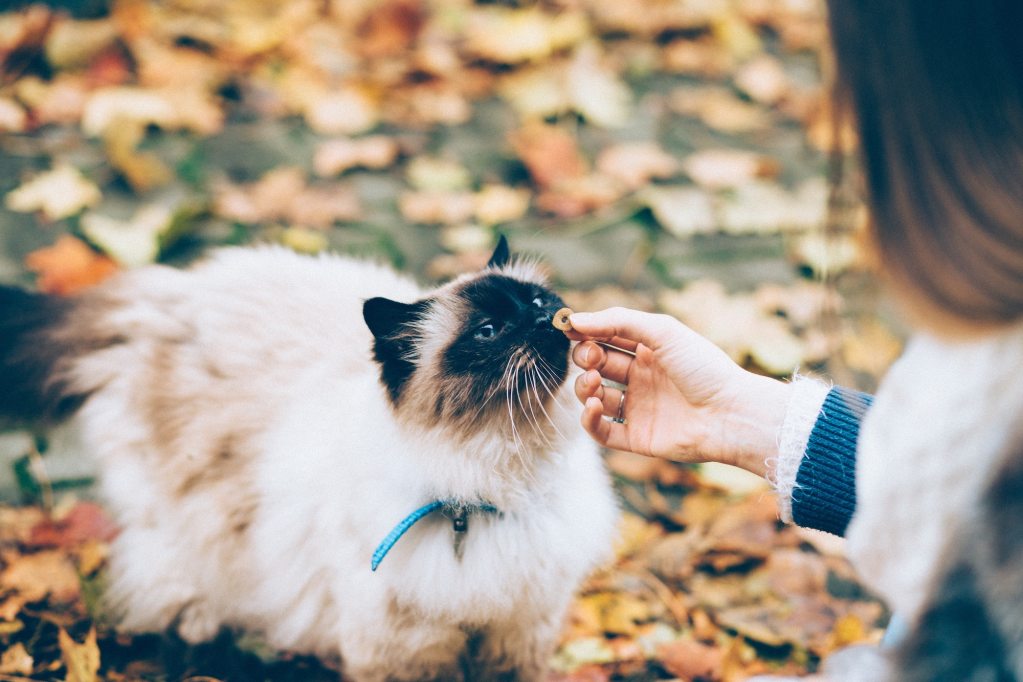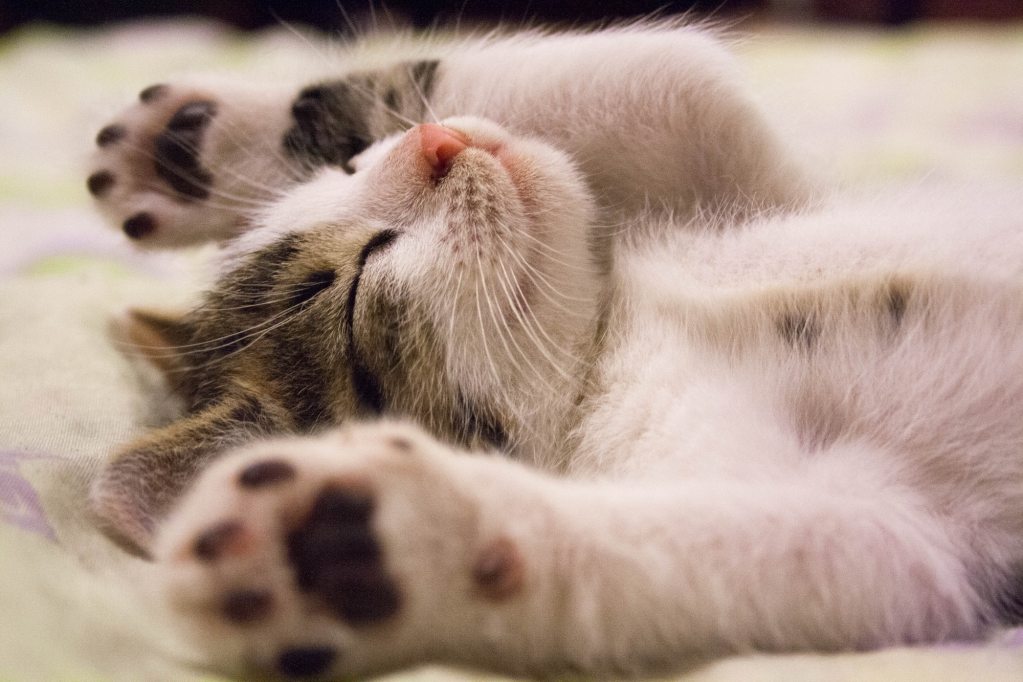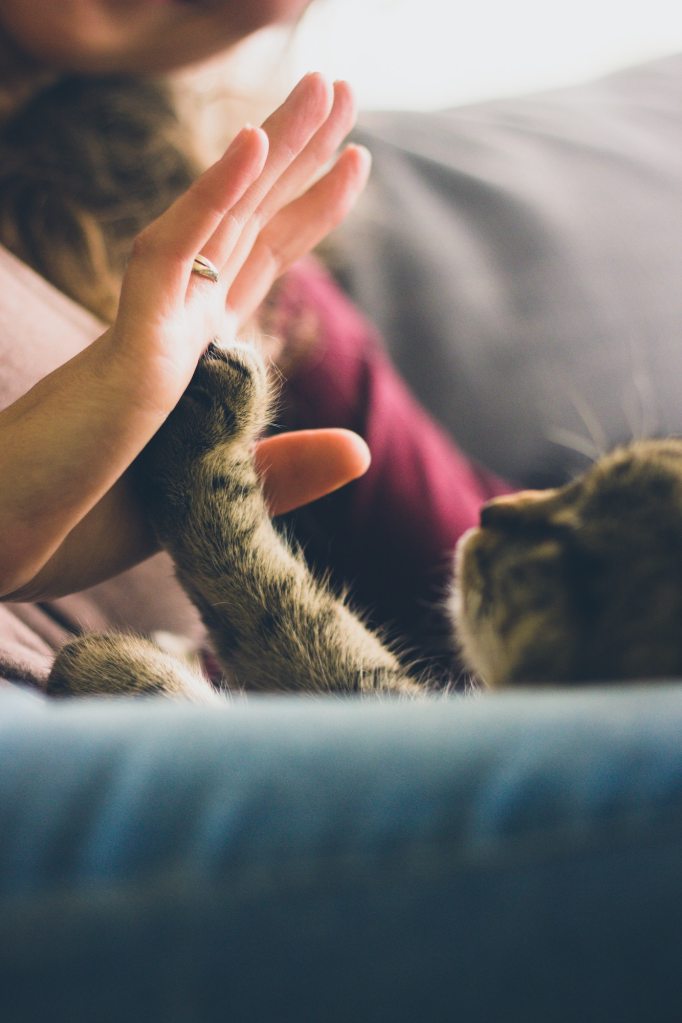When compared to their dog counterparts, cats aren’t exactly known for being the most friendly or tame companions. This may be at least partly due to the fact that cats were domesticated more recently than dogs. However, no matter how independent your cat may seem, you can surely teach them tricks! From simply sitting to jumping through a hoop, cats can be trained to do lots of things with the right tools. They might even be able to do more tricks than dogs can, considering a cat’s flexibility. Keep reading to learn what it takes for successful cat training.
Bribe them with tasty treats

Train your cat with treats, because there’s probably no way to get them to perform tricks without these. If you’ve had your cat for a while, you probably already know which treats they prefer. But if you have a kitten, you might have to do some trial and error when figuring that out. Once you know what kind of treat motivates your cat the best, stock up! However, make sure that the treat is low-calorie and relatively healthy if you plan on doing lots of training in one day — you don’t want to overfeed your cat.
Decide on the first trick
You should probably teach your cat one trick at a time so they don’t get confused. Once they’ve mastered one trick, you can move onto another. But what should you begin with? “Come” and “sit” are arguably two of the easiest commands to teach a cat. And teaching a cat to sit allows you to build on that skill, potentially leading them to lay down and eventually roll over.

To teach a cat to come, hold a treat in front of them, and then gradually move away from them. If they follow you, even if it is only for a few feet, say, “Come,” and give them a treat. Repeat as needed. Teaching them to sit is slightly more complicated. Hold a treat in front of their nose, and then raise it up above their head. This should cause the cat to sit down. If they do sit, say, “Sit,” then give them the treat.
Start slowly
Although it might be frustrating, know that your cat is not going to get any trick right on the first try. Make sure to keep persisting and to stop cat training for the day once your cat seems unresponsive or uninterested. Forcing your cat to do a trick won’t help you or your cat progress in learning it. Patience is important when training cats to do tricks. Keep at it, though! Regularly train your cat to help solidify their ability to do a trick. And choose the right time for training — your cat should be alert, in a good mood, and somewhat hungry.
Reinforcement, reinforcement, reinforcement

Rewarding desired behaviors with treats or praise is the best way to train a cat. You may also consider using a clicker to train them. To use a clicker, click it whenever the desired behavior is performed. You’ll start clicker training with the help of treats, but gradually, your cat should perform a trick just by hearing a click. Regardless of what training method you choose, be sure that you are consistent in your method of reinforcement. Also, negative reinforcement is not recommended, as it may make your cat trust you less and is generally counterproductive.
Moving on to more complex tricks
Once your cat has mastered the two basic commands — sit and come — the possibilities of what trick to teach them next are endless. If you teach them to lay down, you can also teach them to roll over. Or, you might opt to teach them to jump through a hoop or go through a tunnel — activities typical of dog agility contests. “Stay” is also a good command to teach a cat. Cats can even fetch!
A command that can help save their life is to teach them to go into the carrier when a certain sound is heard. The sound might be the command, “Go,” or it could be a whistle or snap. Since cats aren’t always the easiest animals to put in a carrier, this command will prove to be especially useful. No matter the trick you choose, remember to take it slow and always positively reinforce your cat.
Cats aren’t usually thought of as very trainable animals. However, we dare you to break that mold and teach your cat tricks. They are very intelligent animals that can learn to do many different things. But like any other animal, consistency and persistence are important when teaching a cat to do a trick. Keep at it, and soon enough, you will have a cat who knows tricks that you can show off to all your friends and family!


